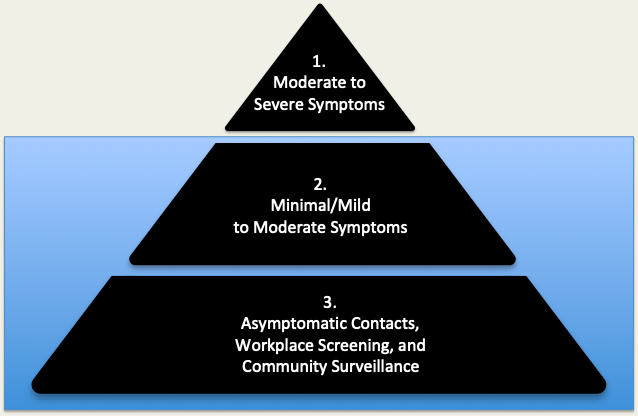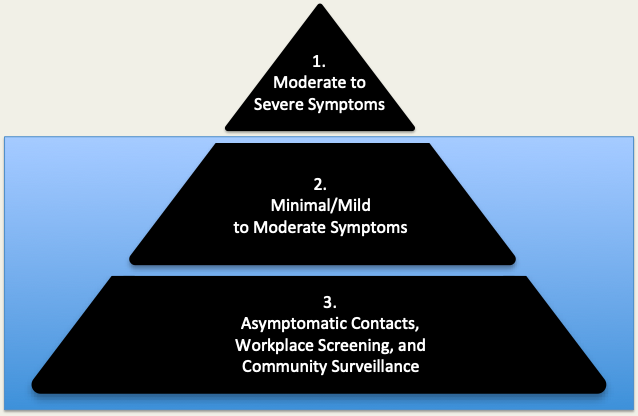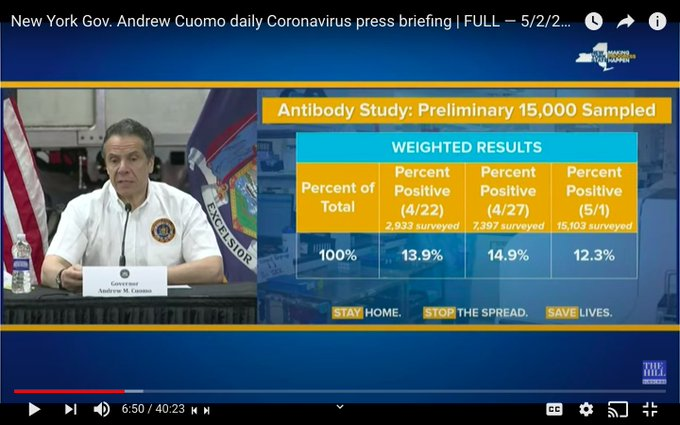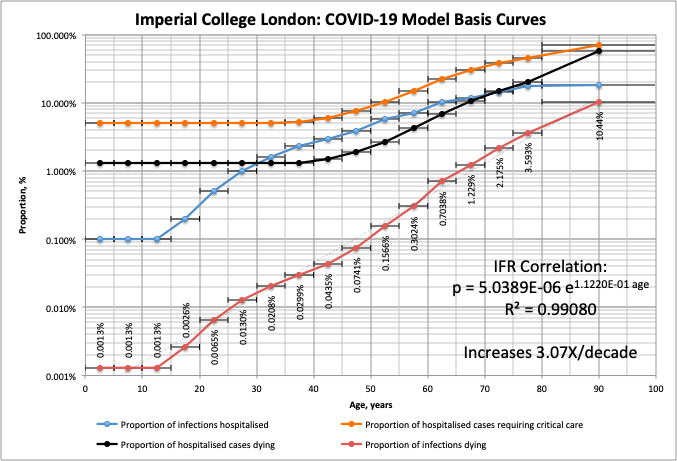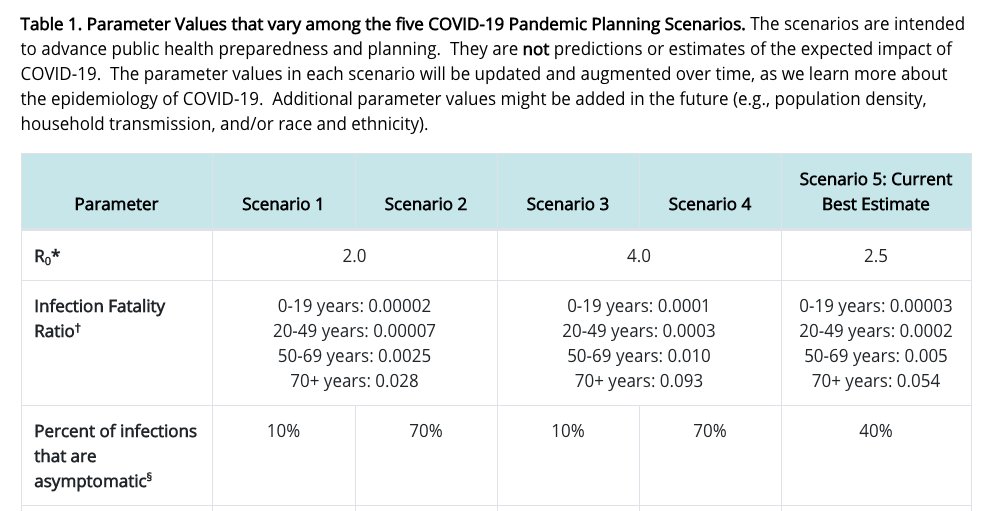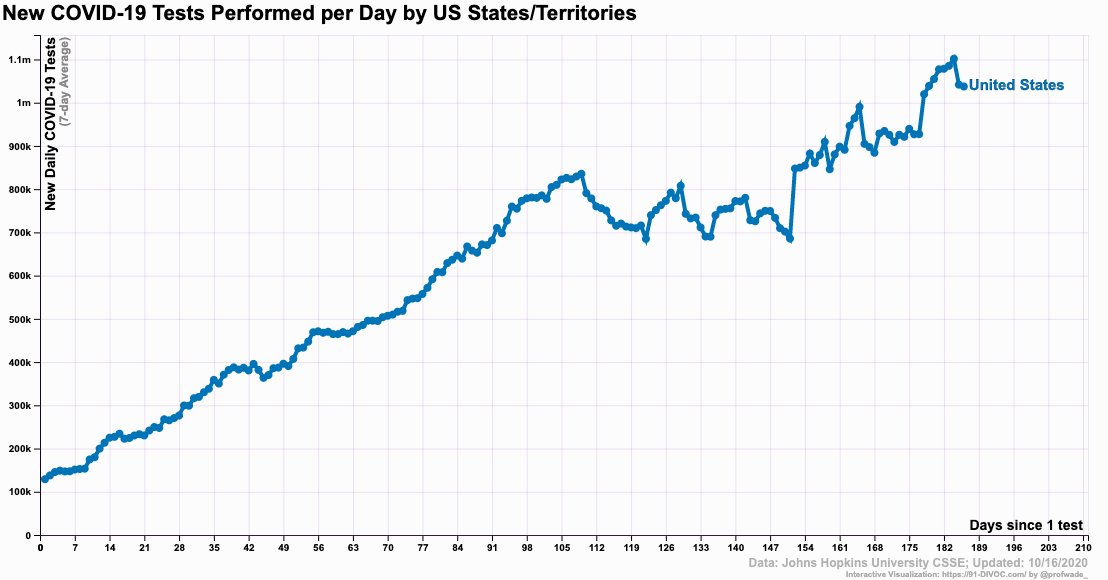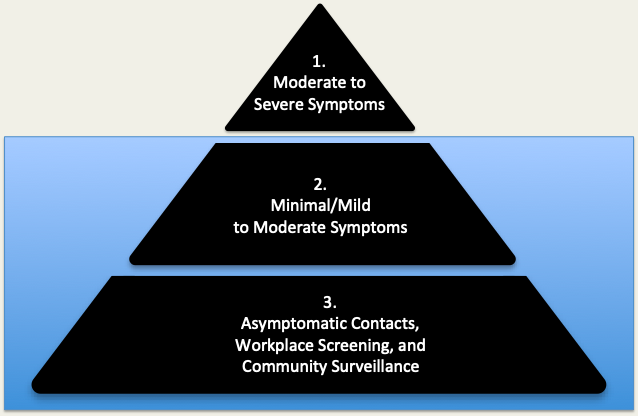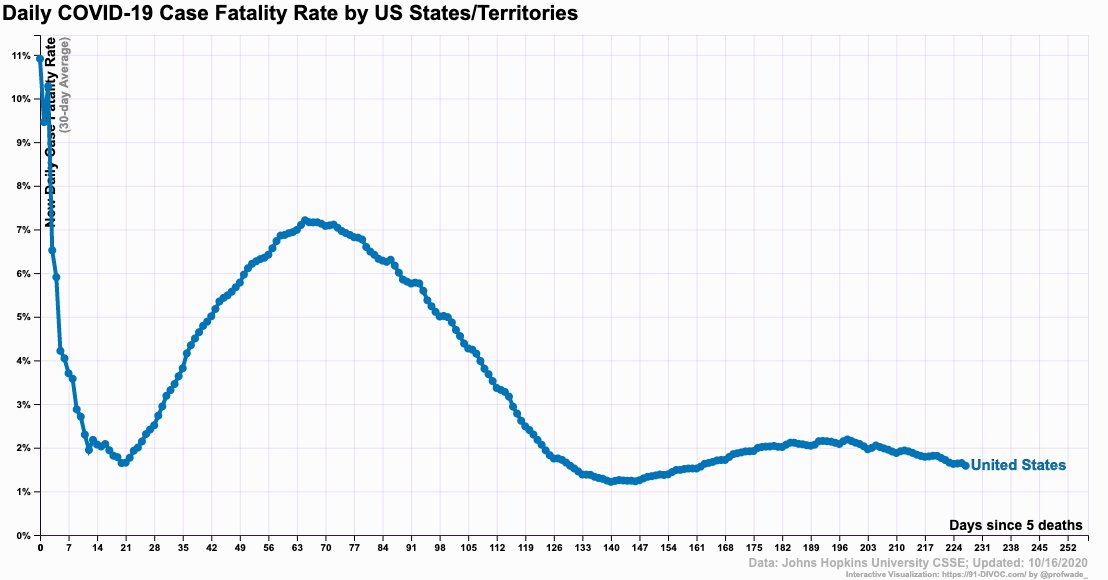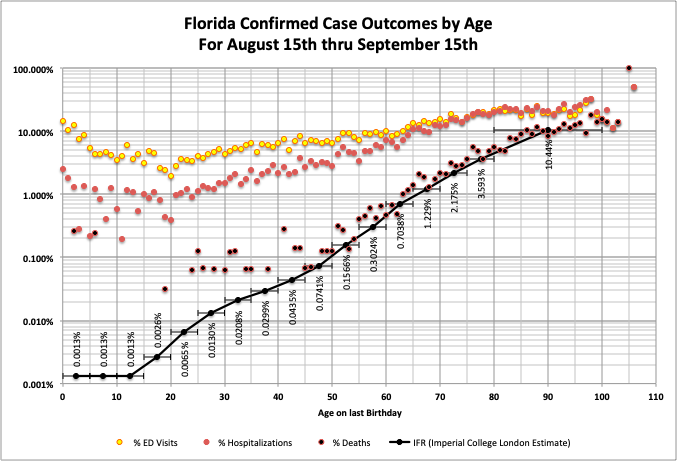(1) Understanding the importance of changes in "Confirmed #COVID19 Cases per Infection":
Not all Infections are discovered, so Confirmed Cases underestimates actual Infections.
Early in the pandemic a very small percentage of Infections were Confirmed (Level 1).
Not all Infections are discovered, so Confirmed Cases underestimates actual Infections.
Early in the pandemic a very small percentage of Infections were Confirmed (Level 1).
(2) Because testing was primarily limited to patients at emergency departments at hospitals, only patients with moderate to severe or even critical symptoms were tested.
(3) For instance, we know from the New York seroprevalence study that there were more than 9-12 times as many Infections as Confirmed Cases during the New York outbreak.
(4) In New York, at that time the Case Fatality Rate (CFR) was reported to be roughly 7%, but only 10% of the Infections were being confirmed, so this translates to an Infection Fatality Rate (IFR) of about 0.7%.
https://www.cdc.gov/coronavirus/2019-ncov/hcp/planning-scenarios.html">https://www.cdc.gov/coronavir...
https://www.cdc.gov/coronavirus/2019-ncov/hcp/planning-scenarios.html">https://www.cdc.gov/coronavir...
(5) Over the course of the pandemic, the United States has increased its daily COVID-19 testing by about 10-fold.
This has allowed people with minimal to mild symptoms to be tested, for asymptomatic contacts to be tested, and for workplace screening and community surveillance.
This has allowed people with minimal to mild symptoms to be tested, for asymptomatic contacts to be tested, and for workplace screening and community surveillance.
(6) As a result of this increased testing, the percentage of Infections that become Confirmed Cases has increased.
Where we were confirming ~10% of Infections we are now confirming ~25% today. For each Confirmed Case there are 3 other Infections, rather than 9.
Where we were confirming ~10% of Infections we are now confirming ~25% today. For each Confirmed Case there are 3 other Infections, rather than 9.
(7) Due solely to this increase in the percentage of Infections that become Confirmed Cases, the 7% CFR is expected to drop by a factor of four tenths to 2.8%.
This assumes the same underlying age distribution and 0.7% IFR (a constant Standard of Care).
This assumes the same underlying age distribution and 0.7% IFR (a constant Standard of Care).
(8) The actual United States CFR has dropped to about 1.6%, which may indicate an improvement in the Standard of Care, or may indicate a shift in the age distribution of Infections.
(9) There really isn& #39;t a single IFR that fits all populations well, but there is an IFR v. Age curve that does a pretty good job.
What it reveals is that we are seeing a high percentage of Infections for people 50y old and older, and a much lower percentage for young adults.
What it reveals is that we are seeing a high percentage of Infections for people 50y old and older, and a much lower percentage for young adults.
(10) In summary, as testing expands the Confirmed Cases count goes toward the actual Infections count, and Case Fatality Rates (CFRs) drop.
Comparing CFRs from different times or locations does not provide an indication of Quality of Care. Many other factors must be considered.
Comparing CFRs from different times or locations does not provide an indication of Quality of Care. Many other factors must be considered.

 Read on Twitter
Read on Twitter